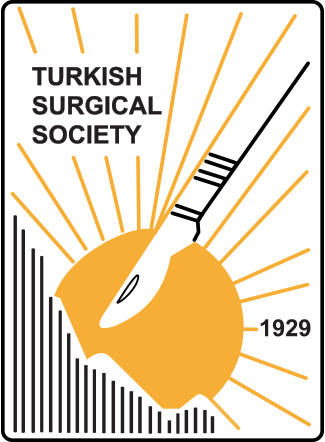Abstract
Purpose: In the present study, the reasons for band release, a rarely encountered complication, as well as the ways to prevent opening of band, were determined in patients who had undergone laparoscopic adjustable gastric band (LAGB) surgery.
Materials and Methods: LAGB was performed for suitable patients. The patients were re-evaluated at each visit. Patients who were thought not to have lost an adequate amount of weight had a barium contrast gastroduodenal radiograph and/or direct radiograph following administration of an opaque substance through the port. Friedman test was used to evaluate the percentage of excess weight loss (EWL) and the percentage of recovery (PCV).
Results: LAGB surgery was performed in 101 cases using the pars flaccida technique. 94 patients were included in the study. The mean age of the patients was 27 years (range, 18-55 years), and the mean follow-up period was 23 months (range, 2-31 months). BMI was 44 kg/m2 (37-62 kg/m2), EWL was 52.6% (p<0.05), and PRC was 52.3% (p<0.05). Opening of band occurred in 4 patients. Three of the 4 patients underwent a Roux-en-Y gastroenterostomy (RYGE) procedure, whereas, the band of 1 patient was relocked.
Conclusion: LAGB is an effective and safe surgical technique in the treatment of obesity. However, the efficacy of the treatment is influenced by technical problems, such as opening of band. Opening of band can be easily diagnosed on the opaque radiographs. When this event occurs, the band should be relocked or a malabsorptive procedure should be performed.
Keywords:
Morbid obesity, bariatric surgery, laparoscopy, gastric banding, opening of band
References
1Vertruyen M. Experience with lapband system® up to 7 years. Obes Surg 2002:12:569–572.
2Saber AA, Elgamal MH, Mcleod MK. Bariatric surgery: The past, present, and future. Obes Surg 2007;18:121–128.
3Biagini J, Karam L. Ten years experience with laparoscopic adjustable gastric banding. Obes Surg 2008;18:573–577.
4Goergen M, Arapis K, Limgba A, et al. Laparoscopic Roux-en-Y gastric bypass versus laparoscopic vertical banded gastroplasty: Results of a year follow-up study. Surg Endosc 2007;21:659–664.
5Dessel EV, Hubens G, Ruppert M, et al. Roux-en-Y gastric bypass as a re-do procedure for failed restrictive gastric surgery. Surg Endosc 2008;22:1014-1018.
6Niville E, Dams A, Vlasselaers J. Lap- Band® erosion: incidence and treatment. Obes Surg 2001;11:744–747.
7Kuzmak LI, Thelmo W, Abramson DL. Reversible adjustable gastric banding. Surgical technique. Eur J Surg 1994; 160:569–571.
8Belachew M, Belva PH, Desaive C. Longterm results of laparoscopic adjustable gastric banding for the treatment of morbid obesity. Obes Surg 2002;12:564–568.
9Taddeucci RJ, Madan AK, Ternovits CA. Laparoscopic re-operations for band removal after open banded gastric bypass. Obes Surg 2007;17:35-38.
10Capella FR, Iannace VA, Capella JF. An analysis of gastric pouch anatomy in bariatric surgery. Obes Surg 2008;18:782-790.
11Korenkov M, Shah S, Sauerland S, et al. Impact of laparoscopic adjustable gastric banding on obesity co morbidities in the medium-and long-term. Obes Surg 2007;17:679–683.
12Suter M. Laparoscopic band repositioning for pouch dilatation/Slippage after banding: disappointing results. Obes Surg 2001;11:507-512.
13Lattuda E, Zappa A M, Mozzi E. Band erosion following gastric banding: how to treat it. Obes Surg 2007;17:329–333.
14Dixon JB, O'Brien PE. Permeability of the silicone membrane in laparoscopic adjustable gastric bands has important clinical implications. Obes Surg 2005;15:624–629.
15Ponson AE, Janssen IM, Klinkenbijl JH. Leakage of adjustable gastric bands. Obes Surg 1999;9:258-260.
16Pomerri F, De Marchi F, Barbiero G, et al. Radiology for laparoscopic adjustable gastric banding: a simplified follow- up examination method. Obes Surg 2003;13:901-908.
17Sanchez H, Cabrera A, Cabrera K, et al. Laparoscopic Roux-en-Y gastric bypass as a revision procedure after restrictive bariatric surgery. Obes Surg 2008;18:1539- 1543.
18Müller MK, Attigah N, Wildi S, et al. High secondary failure rate of rebanding after failed gastric banding. Surg Endosc 2008;22:448-453.



